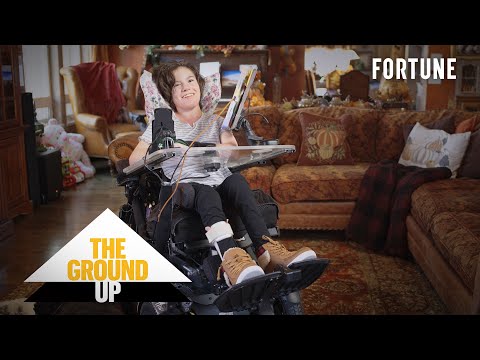The Device Chronicle interviews Kevin Lannen, embedded engineer, LUCI, on the power of over the air software updates (OTA) for increasing the safety and independence of power wheelchair users.
Kevin is the project’s senior embedded systems engineer, overseeing the electrical design, the firmware, and the Yocto Linux and OTA integration. For over two years, LUCI has been offering an intelligent accessory for power wheelchairs. It is a connected product that bolts onto a power wheelchair, and it provides a set of safety features. These include stereo vision cameras, radar, and ultrasonic sensors that detect obstacles and steps. The system then automatically intervenes to slow down or stop the wheelchair to prevent an accident or injury to the user. It works in a similar way to lane keep assist and automatic braking in automobiles.

LUCI is a great story of innovation enabling independence. As CEO of LUCI, Barry founded the company with his brother, Jered, in 2017 with hopes of building a smarter solution for his daughter Katherine and all power wheelchair drivers. Kevin explains, “We wanted to provide a solution to keep power wheelchair users safe. In fact, we found that some users are now able to use a powered wheelchair because of this system. We are helping people to have independence. Fortune magazine interviewed Reannen in Colorado, who, using LUCI, could live a more independent teenage life and go to the shopping mall with confidence and safety.”

Crash test experiments
Kevin explains that the standard power wheelchair has a motor controller, joystick, seat belt, and a price between $30k and $90k. They travel up to 7 miles per hour. LUCI has conducted some crash tests and found the force that would hit the femur in an accident with one of these power wheelchairs was more significant in some cases than what would happen in some car crashes. Concussion and possible brain damage are also risks for the user if the chair tips over.

Embedded hardware
LUCI incorporates a smart frame that mounts to the power wheelchair, and there is an embedded computer in the product. Intel RealSense stereo vision cameras detect ground and obstacles front and back, and collision avoidance is assisted by ultrasonic sensors, radars on both sides, and on the footplate. All this data gets fed back to an i.MX 8M processor, and cellular and wi-fi are used to send caregivers alerts when the battery is running low and or if the chair has tipped over. OTA has allowed LUCI to regularly release updates that have improved the ability to detect obstacles and ignore “false” obstacles; to enable this all the algorithms need to be finetuned and updated. “LUCI allows users to share sensor snapshots with the engineering team and so OTA allows our team to continuously learn and address the needs of our users.”
OTA software updates
An OTA updates manager was required to deploy updates to the processing algorithms, reliability updates, and feature updates. As an example, LUCI just released a feature for users with low vision where the user’s white cane can be ignored by LUCI’s sensors. This was pushed out OTA. Customers can give feedback, features can be developed in response and pushed out quickly in a robust and secure manner. Full root FS updates are performed, and modular updates for some components of the system are planned in the future. A RootFS update allowed for easy OTA migration from Yocto Dunfell to Kirkstone recently. Kevin explains that the fleet is currently several hundred units with thousands of active LUCI units expected within the next couple of years.
“Mender’s benefit was its flexibility.” Kevin and his team looked at container-based options for OTA but wanted to avoid the complexity of writing apps to fit in containers. With Mender, they got OTA support for bare Linux images which enabled faster boot times. The Mender state scripts allowed for lots of flexibility to control updates and also push updates to microcontrollers on the edge of the system. Mender Professional Support also helped the team integrate the board with a Compulab i.MX 8M system on module. With the self hosted version of Mender, LUCI was able to get the first OTA proof of concept running quickly on a Beaglebone board without having to set up any of their own infrastructure.
Mender’s easy integration with the Yocto Project helped create a robust solution for LUCI’s software lifecycle management requirements since the LUCI system is a FDA Class 1 medical device. The Yocto Project has enabled LUCI to meet stringent standards thanks to the careful management of the software bill of materials. Kevin says “Yocto has the tooling and controls to ensure we know exactly what software components and versions are in every image we have built.”
Education on technology for safety
Kevin concludes by explaining that the wheelchair industry historically has been risk averse, and that LUCI as a company is collaborating to bring advanced technology to power wheelchair users. Every year, the company publishes a safety report to demonstrate the effectiveness of LUCI and has helped create new standards and expectations. LUCI sees OTA as a crucial part of keeping users safe by enabling the release of new capabilities as well as bug fixes and security patches. “We’re excited to keep pushing out solutions to our users that give them safe, independent mobility.”
